There are many things in the world that we never really sit back to reflect how unique they are. Take the Airbus A380 for instance, the aircraft can can can carry up to 600 passengers, a figure likely to increase to 900 people if sat as economy travellers. The A380 represents an amazing feat of aircraft design, engineering, and construction and it will hold the distinction of being the largest passenger aircraft ever to have filled our sky.
The Australian national carrier is one of three airlines – the others are Singapore Airlines and Emirates – currently flying the super jumbo. The planes have come with demands such as building larger airports and runways at major airports around the world. The plane is indeed special, travel luxuries for premium-class fliers include double bed seats and it is rumored that some airlines are thought to have ordered for showers and gymnasium.
The airports that will handle A380 flights are taking special steps to accommodate the behemoth. Because of its size — 262 feet wide, 79 feet tall, 1.25 million pounds fully loaded — most taxiways can’t support it. The A380 can fit into only a handful of existing gates in the nation.
Here is a comparison image courtesy of Wikipedia.

A size comparison between four of the largest aircraft, the An-225 (green), the Hughes H-4 Hercules (gold), the Boeing 747-8 (blue), and the Airbus A380-800 (pink).
From a young age I’d always assumed that the Seven Wonders of the World were universally agreed upon. Seven natural wonders and seven man-made wonders. However it would seem that this isn’t the case, ask what the wonders are and you’ll get a different response many times. People have tried to officially declare what they are before, notably the group New7Wonders who claimed to have polled over 100 million people in order to find what the general consensus was. Their poll was flawed in that it allowed multiple voting, so the results will be skewed. However over such a large amount of votes their result can give a decent impression of what are universally seen as wonders.
Anyhow, the point of this article isn’t to nitpick over what are wonders and which aren’t. The point is to highlight some of the natural wonders of the world and maybe trigger some ideas for holidays. If you’re going to spend a lot on a foreign holiday I guess it figures to go see something wonderful. I’ll use a list that CNN made a while back as the basis, but hopefully mentioning these places will inspire you to go out and see the World.
The Victoria Falls are on the border between African countries Zambia and Zimbabwe. They’re the largest waterfalls in the world, despite not being the highest. Victoria Falls is 1.7km long and so is the largest sheet of falling water on the planet.

Victoria Falls
The site is rare in that you can approach extremely close to it on foot. Both Zimbabwe and Zambia have declared the area as a national park and there are towns on either side of the border that you can use as a base for a visit. The site is home to a huge amount of African wildlife and is a truly fanastic place to visit for anyone that wants to visit the continent.
Perhaps a less well-known natural wonder is the Parícutin volcano in Mexico. Rising 424 metres from the landscape it’s the most recent volcano to form in the South American country and is part of a long history of volcanism in the area. There are around 1,400 volcanoes in the Trans-Mexican Volcanic belt and North America with Parícutin being the most memorable.
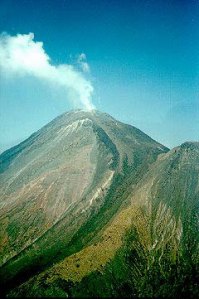
Parícutin
The volcano first erupted in 1943 and was witnessed by the owner of the farmland, Dionisio Pulido and his family. The lava flows from the eruptions engulfed two local villages, causing the residents to have to move. Interestingly, no-one died from the ash or lava but three people are reported to have died from lightning strikes caused by the volcanism. It’s an interesting site and certainly shows how active the Earth’s crust really is. It’s a unique chance to see a recent landscape being formed as often geological process are far too slow for anyone to witness during a lifetime.
I’ve mentioned them before in blogs on this site, and here is yet another gratuitous picture.
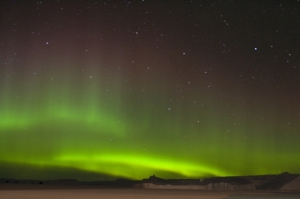
Aurora Borealis
The Aurora Borealis is the result of particles from the Sun colliding with the Earth’s atmosphere. Visible at the poles on clear nights they’re one of nature’s most spectacular sights. I won’t go on about them anymore, but check out my posts on Greenland and Norway for more information.
Perhaps one for the more intrepid traveller, Mount Everest is up next. It’s the highest mountain in the world and lies nestled in the Himalayas on the border between Nepal and Tibet. Explorers and climbers have flocked to the giant mountain since Edmund Hilary’s first successful ascent on 29th of May 1953.
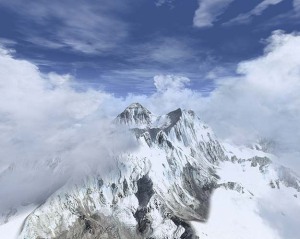
Mount Everest
However if you’re thinking of tackling the epic climb then bear in mind that it’s a long and dangerous journey to the top. 210 people have lost their lives on Everest, including 8 who died in a storm in 1996. Mount Everest is notorious for its Death Zone, the areas of the climb that are over 8,000 feet above sea level. After this point climbers will start to suffer from a lack of air to breathe as well as extreme cold harsh weather. Most climbers use bottled oxygen to help reach the top, although this has lead to a worry of excessive littering on the mountain.
The harbour of Rio de Janeiro in Brazil is considered a natural wonder, and is much easier to visit and enjoy than Mount Everest, thankfully. Rio is a city that is full of Brazilian culture and is home to carnivals, the famous tourist beaches and the world’s largest football stadium.

Rio de Janeiro
The city is home to the largest and second largest urban forests in the world, as well as one of the new wonders of the world, the giant statue, Christ the Redeemer. Rio de Janeiro is striking for its setting and natural beauty and somewhere I’d definitely like to visit in the future.
Distinguishable from space and the largest single structure of organisms in the world, the Great Barrier Reef is one of the most breathtaking natural sites on the planet. Constructed of billions of tiny creatures known as coral polyps the reef stretches for 2,600km along the coast of Queensland, Australia.
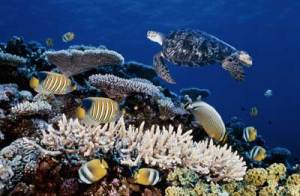
Great Barrier Reef
The reef is home to a huge variety of wildlife and has to managed carefully to ensure its survival. The Great Barrier Reef Marine Park helps to reduce the impact made by humans as well as protect it from natural threats. This is another of nature’s wonders that is relatively easy to visit. Snorkling and diving in the area is extremely popular with tourists.
Last up is the Grand Canyon in the USA. It’s a huge structure that has been formed as the Colorado River snakes its way across Arizona. It’s not the deepest canyon in the world, but it is absolutely colossal. Stretching for 446km it gets up to 29km wide and 1.8km deep.
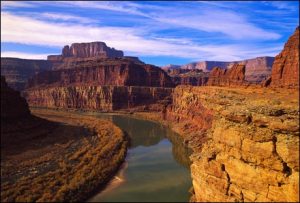
Grand Canyon
The Canyon is a site of outstanding natural beauty and has been revered as a holy site for Native Americans for centuries. It’s possible to view the canyon from the air or to sail down the river. Tourists are also able to view from the rim of the canyon. Anyone looking to visit the USA should definitely consider heading into Arizona to view the Grand Canyon, and if you live in the States then what are you waiting for!


